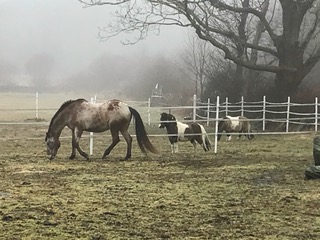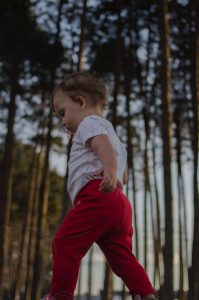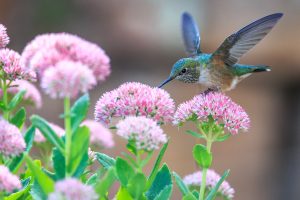Would you like to make a change in your life but worry that you do not have the strength or the courage to do so?
What if it isn’t about strength or courage? Maybe you just don’t know how.
Let’s take exercise as an example. Would you like to change your life by starting an exercise regimen? Do you want to commit to more exercise and movement in your day and yet you don’t know how?
Perhaps you don’t know where to start because the whole idea of exercising is intimidating.
I get it!
I have taught fitness and exercise for over 30 years so I have a lot of experience with the fitness industry. Believe me when I say my first observation is IT CAN BE INTIMIDATING!!!!
How do you get past that intimidation?
May I suggest by just starting.
Starting is the key. “A journey of a thousand miles begins with a single step,” said Chinese philosopher Laozi.
That one step can move you past the intimidation and onto a whole new way of living.
I always tell my students that they don’t have to do a one hundred and eighty-degree turn in order to change. Changing course ever so slightly puts you on another trajectory and that trajectory is the change.
That one step ushers in change.
I want to tell you this story about how a simple change had a profound effect on my horse Asherah.
Asherah is a combination of an Appaloosa and a Thoroughbred.

Appaloosa’s are known to be opinionated, stubborn and often times infuriating.
Here’s a common Appaloosa joke “Why did Native People ride Appaloosa’s into war? Because they wanted to be good and mad when they got there.”
Thoroughbred’s are flighty and nervous.
So Asherah can be a handful of flighty, nervous and enraging all at the same time- but I love her.
So to deal with all of this anxiety Asherah does this horse thing called cribbing.
Cribbing is when a horse grips anything hard with her teeth and at the same time sucks air into her stomach. It is like biting your nails for humans and it releases an endorphin high except it can lead to all sorts of problems like colic.
Colic, abdominal distress, is the leading cause of death in domestic horses. A horse in colic puts fear into every horse owner. Horses cannot vomit so anything that causes intestinal distress can and often is lethal.
Asherah has cribbed so much over her lifetime that she has no front teeth. The endorphin high is so desirable that sometimes she would rather crib than eat. That sounds like an addiction to me. Asherah was addicted to cribbing and because of this, she was at a higher risk for colic.
Then this happened one cold rainy day just before Thanksgiving.
I got to the barn to feed the horses breakfast. My usual perky friendly mare was standing with her head towards the back wall of her stall.
Her stall was a mess and she was covered in shavings or horse bedding.
Often horses that are colicking roll in a frantic effort to get rid of the pain.
Clearly, she had been rolling and thrashing in her stall so this was a sure sign that Asherah was colicking.
I looked at my miserable friend and knew that there were several things that I needed to do.
Trying to control my panic I had to get her out of the stall. If she went down in the stall it would be very difficult to get her up and she might become trapped.
I put on her halter and slowly led her out of her stall and into the barnyard. Her head was low and her eyes were dull with no affect.
I placed my ear on her abdomen to listen for any gut activity and there was silence. Normally a healthy horse’s tummy sounds like a symphony but not today.
My next task was to walk Asherah and pay close attention that she didn’t lie down and roll. When a horse is in this condition if they roll sometimes they will twist their intestine and that can be a very serious situation or even fatal.
Asherah’s head was low and every few steps she would slow down and start to bend her knees a clear indication that she wanted to roll. I had to keep her moving so I grabbed a whip and gently coerced her to keep walking.
Round and round we went in the barnyard.
By this time the light drizzle had turned into a hard, cold New England rain. I pulled out my phone to call my vet but my phone screen got wet and so I couldn’t place the call. Damn cell phones!
My heart was in my throat as I wiped off the screen and tried again, and again and still nothing went through.
By this point, I am crying. Sorry folks I cannot claim grace under fire. In fact, I am shouting to the sky “Help! Help! Please, will someone help me!”
There was no one within earshot.
I knew that if I had this horse medicine called Banamine that I could at least ease her discomfort. Think Pepto Bismal with a muscle relaxant and a dose of painkillers. Unfortunately, I had recently given my only tube of Banamine to another horse friend and so I was out.
Note to self- never be without Banamine when you own a horse.
I looked at my phone again and right under the vet’s number was the number of a fellow horse owner who lived up the road. I pressed her number and the call went through!
Within five minutes Missy was standing in my barnyard Banamine in her hand, a big smile on her face and an offer to grab a blanket to cover my sopping wet horse.
We gave Asherah the medicine and she was immediately better- not out of the woods but not experiencing such pain.
I called my amazing vet Dr. Becky and her always helpful and cheerful assistant Melanie.
After a thorough vet check, Dr. Becky determined that Asherah was colicking because she had ulcers.
For the next few weeks, I gave her the human antacid Zantac- I ground it up and put it in her food. Lots and lots of Zantac.

And I changed her feed from grain to fodder.
For three years now she has been off of grain and she has been great!
I made this simple change from grain to fodder and not only has she had no belly pain or colic but she has also stopped cribbing!
Turns out the sugar in the grain was causing her great distress to the point that she cribbed incessantly trying to relieve the pain.
When I tell this story to horse people they are astonished.
A small simple change can change your life.
You don’t have to do a 180-degree turn. You just have to move the dial.
Go for a walk. Take the stairs. Walk to your mailbox. Don’t use the remote control for your TV. Run 10 steps during your walk. Wear bigger sized shoes with a pliable sole.
Simple changes. It worked for Asherah and it will work for you!
How You Move Matters! You can learn how to move better with my Amazon bestselling book Agility at Any Age: Discover the Secret to Balance, Mobility, and Confidence. My book is illustrated with 40 videos that you access with your iPad or smartphone!
You can purchase it here.
Teaching people how to move well is my passion. Sign up for posts that teach you how to be more comfortable in your body! Click here to sign up or use the form to the right of this post!
My name is Mary Derbyshire. I am a fitness and movement coach. My methodology is the Alexander Technique,  a mindfulness practice that teaches you how to move better. When you move better you feel better and when you feel better your whole life improves! Let me know what you think or ask a question! I love to hear from my readers! Feel free to post in the comments section below and feel free to share this with your friends!
a mindfulness practice that teaches you how to move better. When you move better you feel better and when you feel better your whole life improves! Let me know what you think or ask a question! I love to hear from my readers! Feel free to post in the comments section below and feel free to share this with your friends!


 My name is Mary Derbyshire. I am a fitness and movement coach. My methodology is the Alexander Technique, a mindfulness practice that teaches you how to move better. When you move better you feel better and when you feel better your whole life improves! Let me know what you think or ask a question! I love to hear from my readers! Feel free to post in the comments section below and feel free to share this with your friends!
My name is Mary Derbyshire. I am a fitness and movement coach. My methodology is the Alexander Technique, a mindfulness practice that teaches you how to move better. When you move better you feel better and when you feel better your whole life improves! Let me know what you think or ask a question! I love to hear from my readers! Feel free to post in the comments section below and feel free to share this with your friends!



